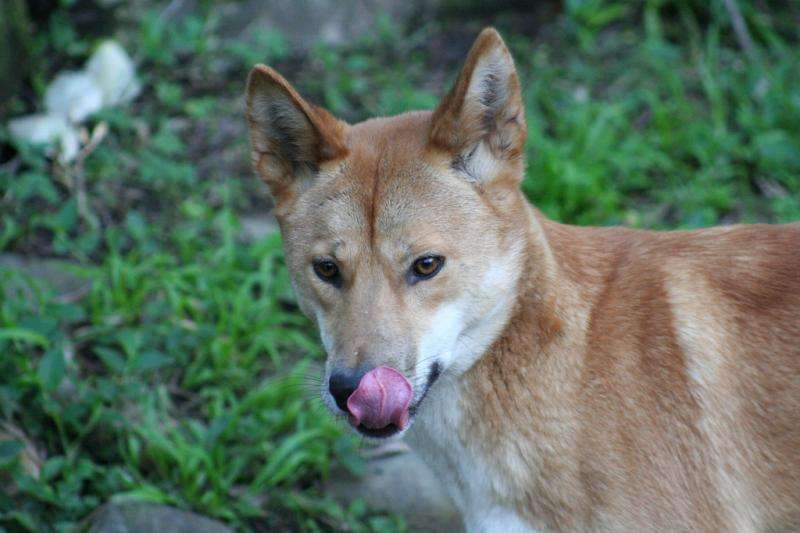Aboriginal female hunters aided by dingoes

In modern society dogs are often referred to as "man's best friend" but according to an archaeological review early Aboriginal society sported a similar relationship between women and dingoes (Canis lupus dingo).
The study by UWA and ANU suggests people formed close bonds with dingoes soon after the dogs' arrival on the mainland roughly 4000 years ago, with the dogs enabling women to contribute more hunted food.
UWA archaeologist Jane Balme, who led the research, says it is thought the first dingoes arrived on watercraft with people from South East Asia.
"What they're doing on the boat is not clear but if you're on a small boat 4000 years ago or so with people, then they probably came here as a domesticated animal," she says.
"But then when they got here they went wild."
Dr Balme says previously collected DNA evidence suggests dingoes could have been introduced at two locations, one in the Kimberley and one in the north-east of Australia.
She says it is likely Aboriginal people quickly formed close bonds with the dogs and early European colonisers recorded that dingoes were used by Aboriginals for a variety of purposes including as blankets and watch dogs.
In today's society dogs are sometimes used as watch dogs but have also been put to work to assist humans in other means such as aiding blind people or as therapy tools for sick or lonely people.
Evidence suggests dingoes would have cramped men's style
Dr Balme says most of the records considered in the study and anthropological observations suggest Aboriginal men did not take dingoes out when they went hunting because they would scare away large animals.
But Dr Balme's and ANU archaeologist Sue O'Connor's study reveals Aboriginals started to feed on a wider variety of small animals after the dingoes arrived in Australia.
This is based on previous archaeological digs of early occupation sites unearthing a wider range of animal bones, which dating techniques confirmed were placed there after the dingoes' arrival.
The research suggests this increase in the variety of animals eaten by Aboriginal people was because women used dingoes to hunt small animals such as goannas.
"We reviewed some of the evidence from archaeological sites, including Tunnel Cave in South West Australia, because it's long been noted that from mid-Holocene [4000-5000 years ago] that there is this change in fauna in many sites," Dr Balme says.
"We thought that maybe this change in fauna is the result of using dingoes as hunting dogs for small animals that are traditionally caught by women."
More information: Jane Balme et al. Dingoes and Aboriginal social organization in Holocene Australia, Journal of Archaeological Science: Reports (2015). DOI: 10.1016/j.jasrep.2015.08.015
Provided by Science Network WA
This article first appeared on ScienceNetwork Western Australia a science news website based at Scitech.




















